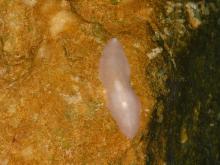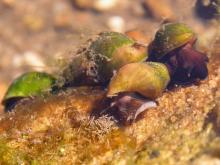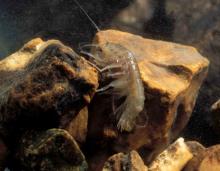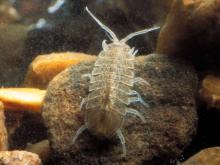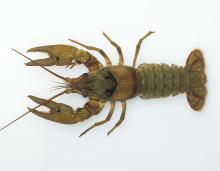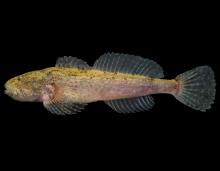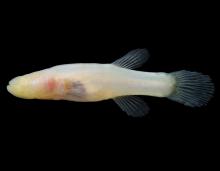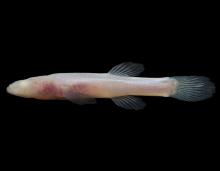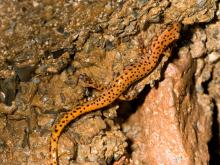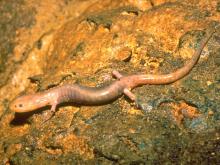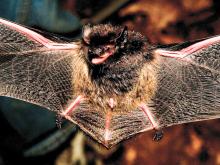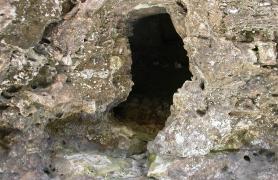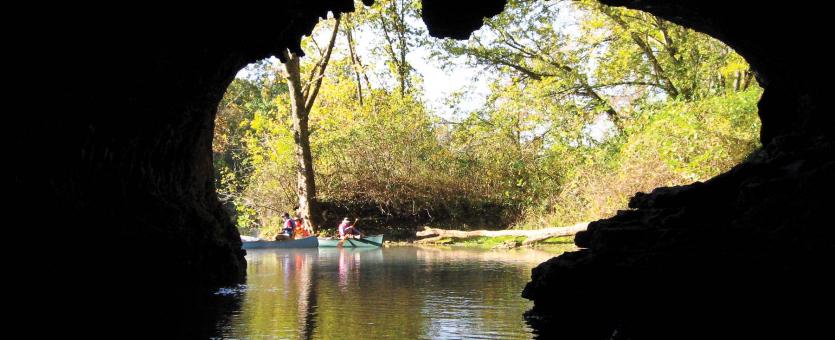
Wet Cave Diversity
Though there is a lot of overlap, wet cave communities can be described based on the way water flows within them.
Cave Springs
A cave spring is a cave that has a stream flowing from the entrance. This water flow is often permanent or nearly permanent. Cave springs are usually positioned at the base of steep slopes or bluffs along streams. The water's source is usually rainwater, which flows into the cave through sinkholes or through the permeable rocks (limestone, dolomite) above. Usually, the passages branch into the cave like tree branches. The networks of passageways can total more than 26 miles in length.
Most of our major bat caves are cave springs, which are sometimes called effluent caves. The ecosystem in these caves usually begins with the nutrients in bat guano. Bats eat insects outside the cave, then fly into the cave to roost. The guano that collects below them is broken down and digested by microorganisms and tiny animals, which then are eaten by increasingly larger animals.
Swallets
Swallets, sometimes called swallet holes or influent caves, can have an intermittent or perennial flow of water, but in this case the water, usually a stream, enters the cave system through a “swallow hole.” The swallow hole can be a horizontal entrance, a sinkhole, or a crack in a stream. A “pirated stream” is when a surface stream is “pirated” as it is diverted underground via a sinkhole or cave within its valley. Passageways of influent caves are relatively simple and can be hundreds of feet to several miles long.
The ecosystem of influent caves tends to have more nutrients fed into it than effluent caves do. Large amounts of organic material (eroded soil, branches, leaves) can be flushed into the cave by rainwater, surface streams, flooding, and other runoff.
Wet Pit Caves
Pit caves have vertical cave entrances, which are called shafts or pits. These shafts can be several feet to more than 100 feet deep. These entrances are often associated with sinkholes or crevices on bluffs. As the name suggests, wet pit caves have permanent water in the form of underground streams or lakes.
Nutrients enter the cave in the form of organic materials (anything living or once living) that fall into the cave. These caves are rare. Bats are not usually associated with them.
Missouri has more than 7,000 caves identified (so far). If their tunnels were all combined and straightened out, they would run for more than 500 miles. Most of our wet caves are in the Ozark Highlands ecoregion (Ozark and Ozark Border natural divisions), where they occur in soluble dolomite or limestone. There are almost no caves in northwestern Missouri and in the Bootheel lowlands.
Key species
